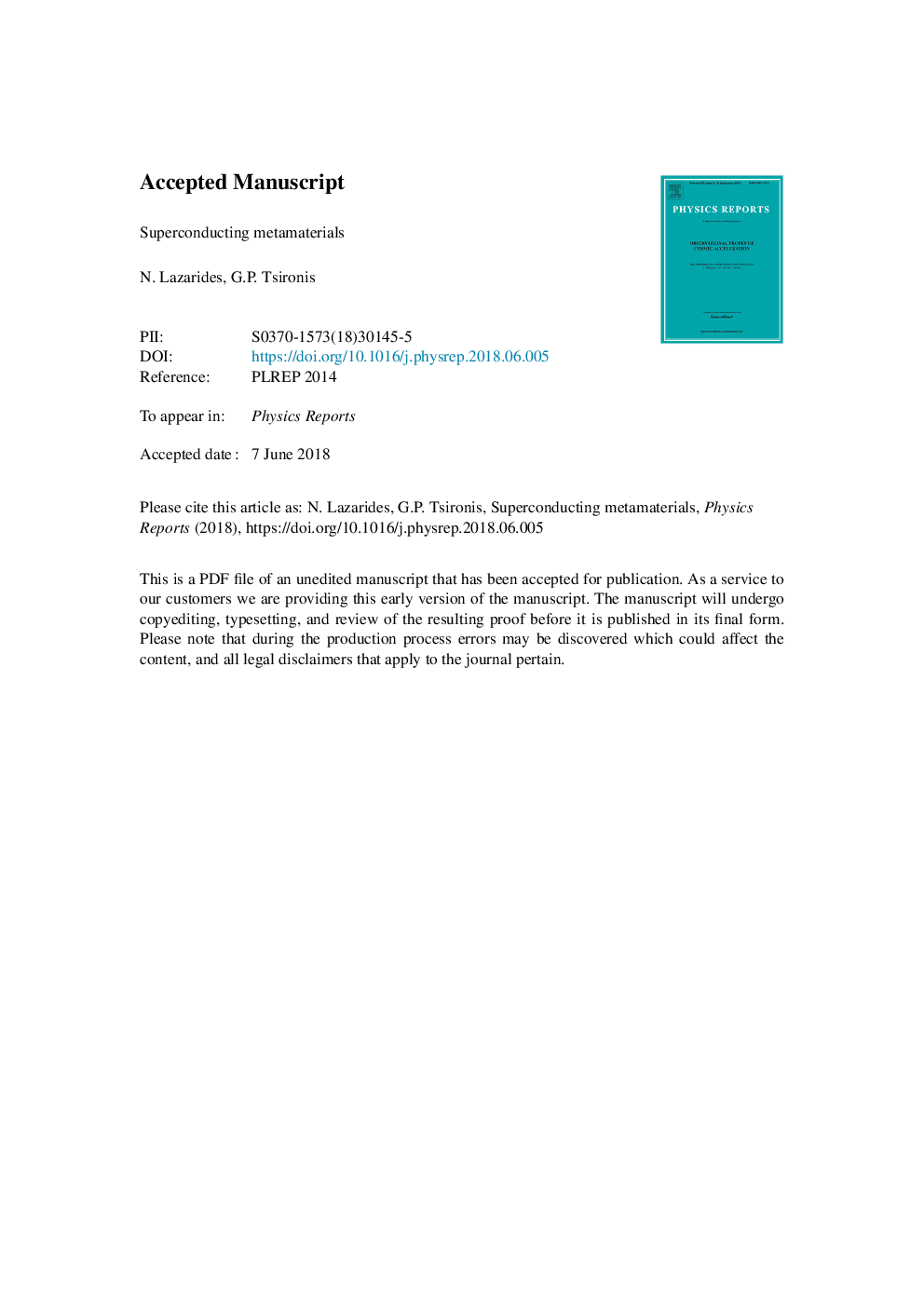| Article ID | Journal | Published Year | Pages | File Type |
|---|---|---|---|---|
| 8943658 | Physics Reports | 2018 | 85 Pages |
Abstract
Metamaterials, i.e. artificial, man-made media designed to achieve properties not available in natural materials, have been the focus of intense research during the last two decades. Many properties have been discovered and multiple designs have been devised that lead to multiple conceptual and practical applications. Superconducting metamaterials made of superconducting metals have the advantage of ultra low losses, a highly desirable feature. The additional use of the celebrated Josephson effect and SQUID (superconducting quantum interference device) configurations enrich the domain of superconducting metamaterials and produce further specificity and functionality. SQUID-based metamaterials are both theoretically investigated but also fabricated and analyzed experimentally in many laboratories and exciting new phenomena have been found both in the classical and quantum realms. The enticing feature of a SQUID is that it is a unique nonlinear oscillator that can be actually manipulated through multiple external means. This domain flexibility is inherited to SQUID-based metamaterials and metasurfaces, i.e. extended units that contain a large arrangement of SQUIDs in various interaction configurations. Such a unit can be viewed theoretically as an assembly of weakly coupled nonlinear oscillators and as such presents a nonlinear dynamics laboratory where numerous, classical as well as quantum complex, spatio-temporal phenomena may be explored. In this review we focus primarily on SQUID-based superconducting metamaterials and present basic properties related to their individual and collective responses to external drives; the work summarized here is primarily theoretical and computational with nevertheless explicit presentation of recent experimental works. We start by showing how a SQUID-based system acts as a genuine metamaterial with right as well as left handed properties, demonstrate that the intrinsic Josephson nonlinearity leads to wide-band tunability, intrinsic nonlinear as well as flat band localization. We explore further exciting properties such as multistability and self-organization and the emergence of counter-intuitive chimera states of selective, partial organization. We then dwell into the truly quantum regime and explore the interaction of electromagnetic pulses with superconducting qubit units where the coupling between the two yields phenomena such as self-induced transparency and superradiance. We thus attempt to present the rich behavior of coupled superconducting units and point to their basic properties and practical utility.
Keywords
Related Topics
Physical Sciences and Engineering
Physics and Astronomy
Physics and Astronomy (General)
Authors
N. Lazarides, G.P. Tsironis,
